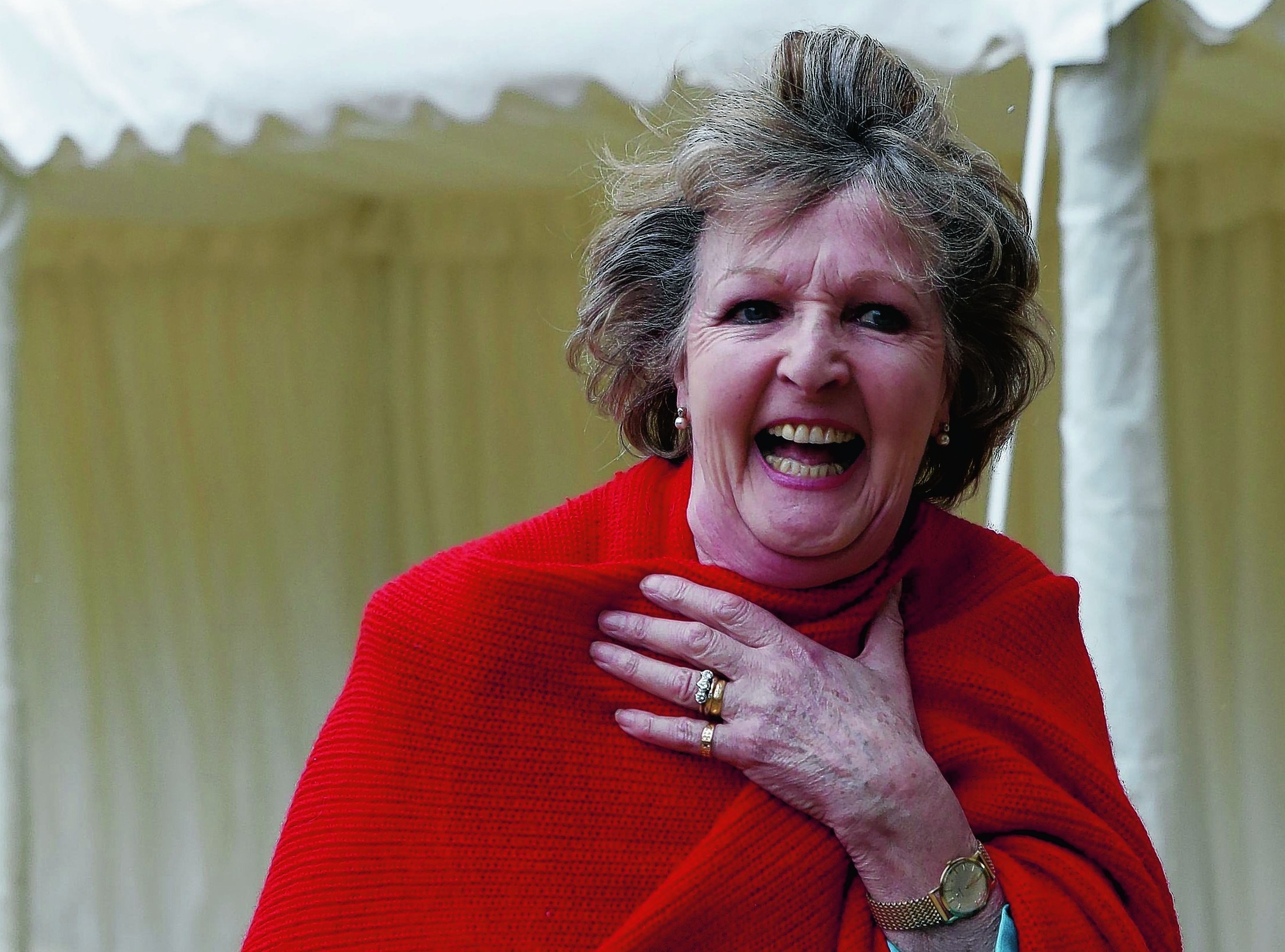Penelope Keith is best known for her acting roles in some of British TV’s finest sitcoms, including The Good Life and To The Manor Born.
Now 74, Penelope’s about to return to the box with Hidden Villages, a new series in which she travels the country, meeting people who live in some of Britain’s most picturesque areas. Here she discusses the programme, her hopes for a second series and her future plans.
GIVE US A LITTLE TASTE OF WHAT HIDDEN VILLAGES IS ABOUT
I went to three different areas – East Anglia, Norfolk, Suffolk and Essex, and to North Wales and Lancashire and Cheshire, and Somerset and Wiltshire and Dorset, just various villages in those locations. I talked to people, all sorts of folk, from those going out on lifeboats to fishermen, to people with light industry, through to a man who was an authority on droving sheep. Young people, old people – it was fascinating.
WHERE DID THE IDEA COME FROM?
People have a sort of romantic idea about villages because these days our lives seem to be dominated by urban thoughts and problems, but actually a lot of people still do live and work in villages, and there are some beautiful places in our country. We see villages in Midsomer Murders, and that’s about it.
AND THEY’RE NOT VERY REALISTIC DEPICTIONS, ARE THEY?
Not really, no. Well, I hope not anyway! Where I went, there weren’t any murders, no!
IT’S NICE TO GET A REAL IDEA OF WHAT MODERN VILLAGE LIFE IS LIKE IN THE 21ST CENTURY
Yes exactly. There are problems. I went to North Wales, where a lot of villages grew up for the slate quarrying industry. That has stopped, but now they’ve embraced tourism.
I went to a place in Wiltshire where young people, rather than wanting to get away, are rather enjoying themselves by having a centre where they do all sorts of interesting things. OK, so there are places where the local pub has gone and the shops have gone, but in another village I went to, the villagers have got together and have opened the pub and volunteers man it. And a shop as well.
IT’S INTERESTING WHAT YOU WERE SAYING ABOUT YOUNG PEOPLE
Up in Norfolk, there was a girl there who was 21 or 22 and she was part of the lifeboat crew and was training to be a coxswain. She lived just 10 minutes away from the lifeboat station. So there are a lot of things that young people do. One does tend to get this idea that it’s a load of old codgers tottering around, like me, with straw in their hair, but it’s not, a lot of them are thriving.
THERE’S A CLIP IN WHICH YOU’RE SEEN FLYING ABOVE NORFOLK IN WHAT APPEARS TO BE A RATHER SCARY CONTRAPTION
I had total confidence in the pilot! And it was a lovely experience. Now that was a chap who had opened up a small factory on what used to be a World War II airfield. He’s opened up this small factory where he assembles those planes, and he’s employed two apprentices from the local villages, who are learning the trade.
YOU’VE LIVED IN A VILLAGE FOR A LONG TIME
Yes, I live in a village in Surrey. I adore the fact that you know who people are and they smile and they might even say good morning, which you don’t get in cities. No one ever looks at you, do they? And that’s most peculiar. We’re all on this planet together, let’s rub along and have fun, and the occasional smile is quite nice.
HAVE YOU SEEN ANY MAJOR CHANGES IN VILLAGE LIFE OVER THE YEARS?
In my village, certainly. I’m in a commuter belt. I’ve seen the fact that the property prices have gone higher and higher. And I’ve seen more and more younger families moving out of London.
These are younger people from cities, so the chaps probably get the seven o’clock train and don’t get home until seven o’clock at night. There are very few villages now that are self-supporting, which means that not everybody who lives there works there, which I suppose is the great difference, and the great problem is with the closure of pubs, shops and post offices. And a lack of public transport, of course. It really is a big issue.
IF THERE IS A SECOND SERIES, WHERE WILL IT TAKE YOU?
Yorkshire! I’d love to go to the north east because I love it up there, that wonderful coastline. Lindisfarne and all that. And of course Cumbria is unexplored really. Everyone thinks of the Lake District, but up there, some of those villages we only got to hear about when they were flooded during that awful time, do you remember? And of course far down into Cornwall, which is often neglected.
IT SOUNDS LIKE A DREAM PROJECT FOR YOU, BUT IS THERE ANYTHING ELSE YOU’D LIKE TO GET OFF THE GROUND?
No. My garden is my project at the moment, putting it to bed for the winter and hoping the weeds don’t pop up again.
WHICH DO YOU PREFER THESE DAYS – ACTING OR PRESENTING?
I so enjoyed this. I’ve been very lucky, I’ve done so many different things. Yesterday I was reading an audio book, which I enjoy doing and it was fascinating. So I rather like what comes up next, as long as it’s different and interesting.
SO WHAT IS COMING UP NEXT?
Nothing at the moment. Christmas is the next big thing I suppose – that will soon be looming large. And then we’ll see what 2015 brings.
- Penelope Keith’s Hidden Villages begins on More4 this month.
